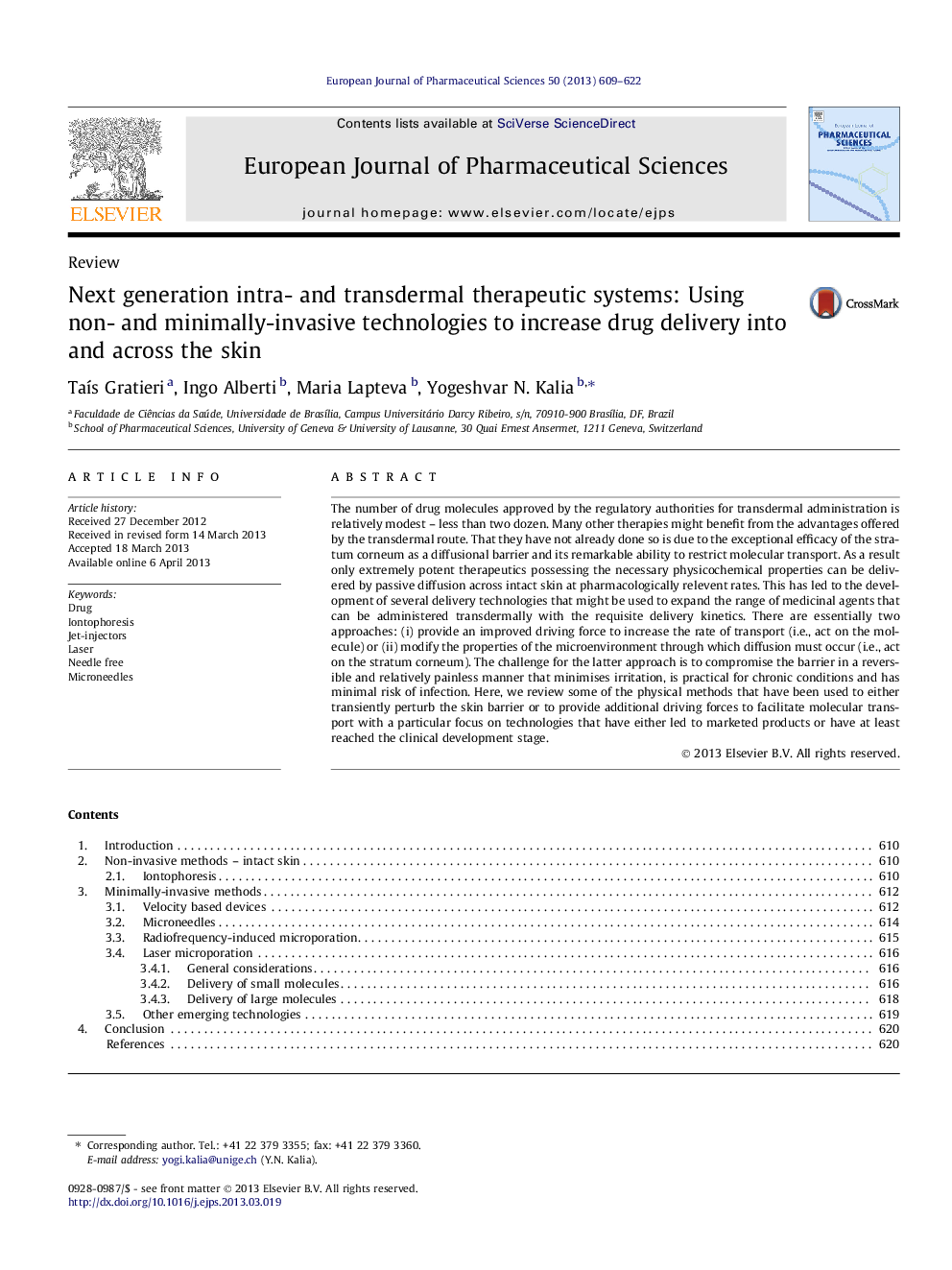| Article ID | Journal | Published Year | Pages | File Type |
|---|---|---|---|---|
| 5810046 | European Journal of Pharmaceutical Sciences | 2013 | 14 Pages |
The number of drug molecules approved by the regulatory authorities for transdermal administration is relatively modest - less than two dozen. Many other therapies might benefit from the advantages offered by the transdermal route. That they have not already done so is due to the exceptional efficacy of the stratum corneum as a diffusional barrier and its remarkable ability to restrict molecular transport. As a result only extremely potent therapeutics possessing the necessary physicochemical properties can be delivered by passive diffusion across intact skin at pharmacologically relevent rates. This has led to the development of several delivery technologies that might be used to expand the range of medicinal agents that can be administered transdermally with the requisite delivery kinetics. There are essentially two approaches: (i) provide an improved driving force to increase the rate of transport (i.e., act on the molecule) or (ii) modify the properties of the microenvironment through which diffusion must occur (i.e., act on the stratum corneum). The challenge for the latter approach is to compromise the barrier in a reversible and relatively painless manner that minimises irritation, is practical for chronic conditions and has minimal risk of infection. Here, we review some of the physical methods that have been used to either transiently perturb the skin barrier or to provide additional driving forces to facilitate molecular transport with a particular focus on technologies that have either led to marketed products or have at least reached the clinical development stage.
Graphical abstractDownload high-res image (82KB)Download full-size image
